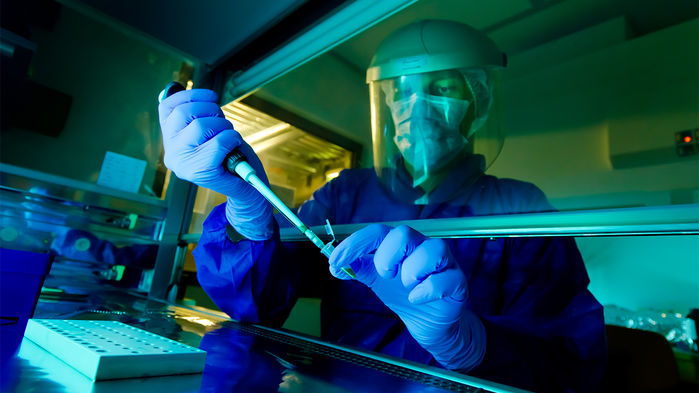
"It's a great breakthrough," says Chris Stringer, an anthropologist at the Natural History Museum in London. "Anyone who's digging cave sites from the Pleistocene now should put [screening sediments for human DNA] on their list of things that they must do." Adds Svante Pääbo, the head of the Max Planck Institute for Evolutionary Anthropology in Leipzig, Germany, where the work was done: "I think this will become a standard tool in archaeology, maybe even like radiocarbon dating."
Scientists have known that DNA can survive in ancient sediments since 2003, when Eske Willerslev, an evolutionary geneticist at the University of Copenhagen, sequenced the DNA of mammoths, horses, and 19 plant taxa from cores drawn from Siberian permafrost and temperate caves. But at the time, Willerslev recalls, he had no way of distinguishing ancient human sequences from the modern ones that can contaminate samples as they are handled. Since then, techniques for filtering out such contamination have improved, which encouraged Max Planck geneticist Matthias Meyer to try to sieve out human DNA from sediments in once-occupied caves.
When Meyer and Max Planck doctoral student Viviane Slon first sequenced environmental DNA from Pleistocene cave sediments around Europe, the data overwhelmed them. "It's on the order of trillions of DNA fragments in a sample the size of a teaspoon," Meyer says. Only a tiny fraction of those fragments might belong to ancient humans. To capture them, the researchers developed a delicate DNA hook, crafted from modern human DNA from the mitochondria, the tiny power plants that produce energy for cells. The molecular hook fished out the sequences that most resembled it, which Meyer and Slon then compared to known mitochondrial DNA (mtDNA) sequences from Neandertals and Denisovans. They looked for mtDNA because it is much more abundant than nuclear DNA, with thousands of copies per cell.
The pair worried that human DNA would be so scarce that even their careful fishing would fail to find it. "My jaw dropped," Slon said, at the sight of the first Neandertal sequences. She and Meyer detected Neandertal DNA in sediment from four of seven cave sites, ranging from Spain to Russia, where archaic humans were known to have lived, they report in a story published online today. They also found Denisovan DNA from sediment in Denisova Cave, the Siberian site containing the only known Denisovan bones. There, both Neandertal and Denisovan DNA emerged from layers where no bones had been found, pushing back the period of human occupation by tens of thousands of years. Meyer and Slon even managed to find Neandertal DNA in Belgium's Trou Al'Wesse Cave, which contains no Neandertal bones at all—only characteristic stone tools.
Meyer and Slon also analyzed the DNA of other mammals known to have inhabited the caves, based on bones found there. The DNA and bones told the same story about when and where the animals were present, giving the researchers confidence that chronologies derived from soil DNA are reliable.
"I'm so happy to see the field move in this direction," says Hendrik Poinar, head of the ancient DNA lab at McMaster University in Hamilton, Canada. Several researchers say ancient DNA from sediments will help them complete the map of ancient human occupations and allow them to see where species may have overlapped and interacted. That's important because bones of humans are extremely rare. For example, ancient human DNA might have strengthened the controversial claim this week of the oldest human presence in the Americas.
"If one must rely on finding bones, one will always have incomplete data," says Beth Shapiro, an evolutionary biologist at the University of California, Santa Cruz. "By isolating DNA directly from sediments, we can dramatically expand what we know about where people were, when they got there, and how long they stayed." This could be particularly important for the Denisovans, identified so far only from one cave. Genetic traces lingering in living people suggest that this archaic species must once have lived across Asia. But researchers don't know exactly where, or when.
Stringer suspects ancient human DNA from sediments could also help resolve whether certain controversial stone tool technologies, such as the Uluzzian found in Italy, were made by modern humans or Neandertals. It could even reveal the existence of ancient human species that scientists don't yet know about, he says. "What else is out there?"



Reader Comments
to our Newsletter